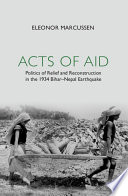

Most ebook files are in PDF format, so you can easily read them using various software such as Foxit Reader or directly on the Google Chrome browser.
Some ebook files are released by publishers in other formats such as .awz, .mobi, .epub, .fb2, etc. You may need to install specific software to read these formats on mobile/PC, such as Calibre.
Please read the tutorial at this link: https://ebookbell.com/faq
We offer FREE conversion to the popular formats you request; however, this may take some time. Therefore, right after payment, please email us, and we will try to provide the service as quickly as possible.
For some exceptional file formats or broken links (if any), please refrain from opening any disputes. Instead, email us first, and we will try to assist within a maximum of 6 hours.
EbookBell Team

4.8
54 reviewsThis history of an Indian earthquake aftermath analyses the role of civil society, the colonial state and international aid in disaster relief.
This socio-political history on the aftermath of the 1934 Bihar–Nepal earthquake explores disaster aid, relief, and reconstruction and the questions they give rise to about class, communities and inequality. The book traces disaster responses across the twentieth century in order to demonstrate how they were embedded in political processes transcending the event of the earthquake. Aid, relief and reconstruction mirrored political agendas and ideas that articulated both changes and continuities by the colonial state, civil society and international organisations. The impact of the earthquake and aid in its wake varied widely according to social groups, ethnicity and gender in the aftermath. By studying the effects of the earthquake on communities directly affected and society, the author argues that we can come closer to an understanding of the role political, social and cultural factors held in shaping resilience to natural disasters.